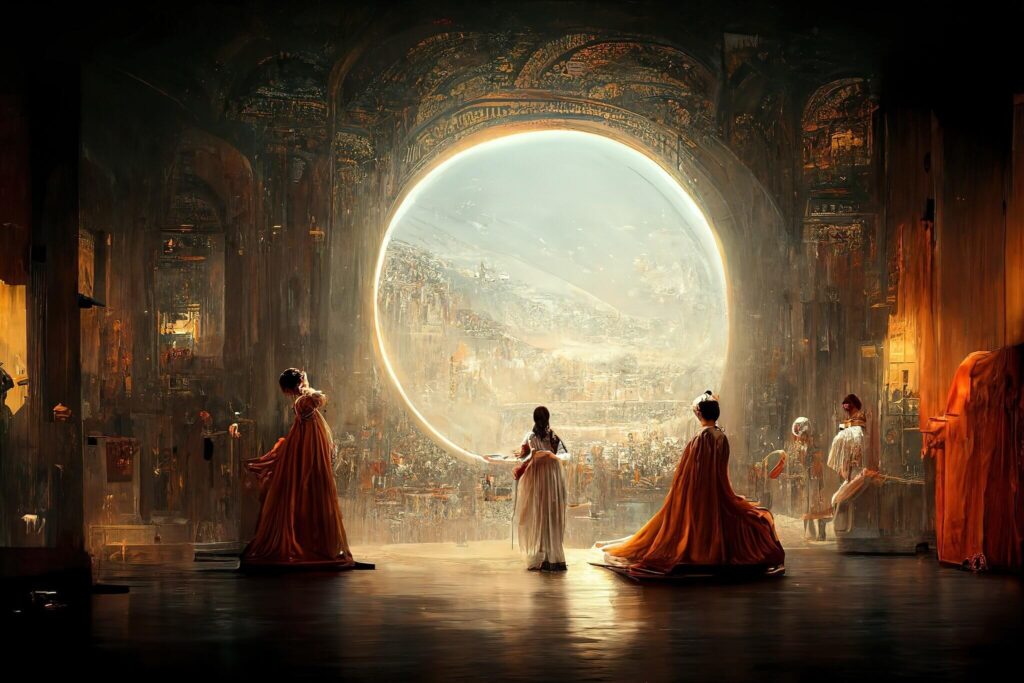Lucia Forte ’26
Many of the art students and faculty at EA are familiar with the concept of advanced technology as a platform for creating art. However, recent technological advances have been producing products that have been blowing even the brightest of students and artists away: Artificial Intelligence (AI).
AI platforms such as Siri, ChatGPT, and Androids have monopolized the technology industry. When it comes to art, AI developments have significantly assisted in the creation of artwork in recent years. Student artist Riley Thibodeau ’23 comments, “Over the past years, AI has changed a lot. There are some programs where one can plug an artist’s work into a system that can generate a new, similar piece.”
AI inventions such as these have been assisting artists and allowing them to amplify and improve their craft. One of the primary studies surrounding this has been the invention of computational creativity, the process of building software that allows computers to act in the same creative nature as humans by inventing entities such as paintings and music.
A passage from Next Step: Exponential Life explains that we can view AI and computers as entities capable of not just intellect. It reads, “Rather than just seeing the computer as a tool to help human creators, we could see it as a creative entity in its own right.” This idea that computers can have such a distinctly human trait as creativity has the potential to monopolize the world of art.
Matt Memmo, Chair of Computer Science and Engineering, teaches the course, Data Structures and AI. In this class, one of their projects involves bringing art to AI. Memmo gives an overview of the assignment, commenting, “We work with landmarks, and you can use these libraries that will recognize parts of your body; so we have one lesson in which you have to add sunglasses or put a hat on, almost like a snapchat filter.”
Memmo offers additional insight into the world of AI generated art, commenting on one of its most famous platforms, “DALL-E is the big one out there. That one, when that came out around last spring, the latest version, it was kind of like how ChatGPT is getting a lot of buzz now. And rightfully so, it was very impressive, especially when compared to its last iteration, in terms of the quality it could generate based on just key words or a sentence describing what you would like it to make.”
Different and more advanced forms of AI are appearing all over the creative world, and there has been some debate on whether or not it is more beneficial or detrimental to the artistic industry. AI art has many benefits: it allows for more quickly generated artwork, can recreate lost historical art, and it brings an artist’s vision to life perfectly.
Adam Hencz, a writer for Artland Magazine explains that “AI artists embrace the interplay between accident and control and use AI to find a balance between the two while developing novel concepts and visuals. We are already seeing it in pop album covers, gracing traditional art gallery walls, and expanding our notion of computer-generated art.” AI art generators were not created with malicious intent or as a way to confuse the artistic world. They were created as a means to amplify and shine a light on already existing creative capabilities through advanced technology.

Photo courtesy of nytimes.com
Individuals who were already immensely talented and inventive have used AI artwork to enhance their own visions. In 2015, a form of AI Art production known as “Google DeepDream” was invented. DeepDream was originally used by scientists to assist with visualizing patterns, but its algorithm eventually became accessible as a form of abstract art. Artificial art-generation platforms such as DeepDream, WOMBO Dream, GauGAN 2, and more have all used different techniques to provide new ideas and inventions that have revolutionized the world of art. AI has come a long way and is still a work in progress. Engineers and artists continue to work and explore every day all that the AI world has to offer.